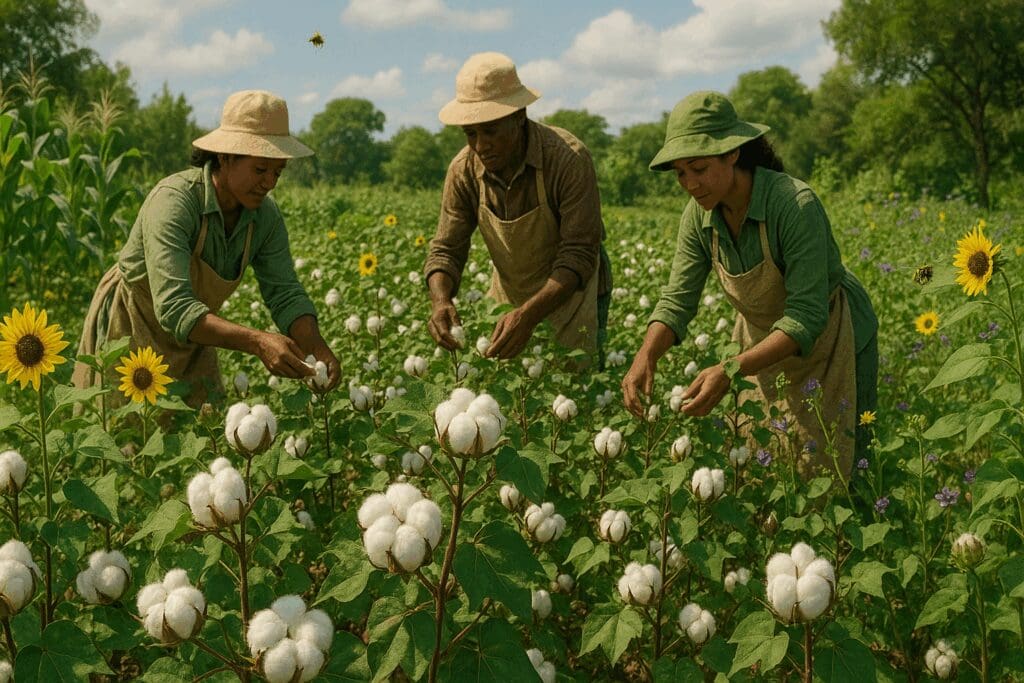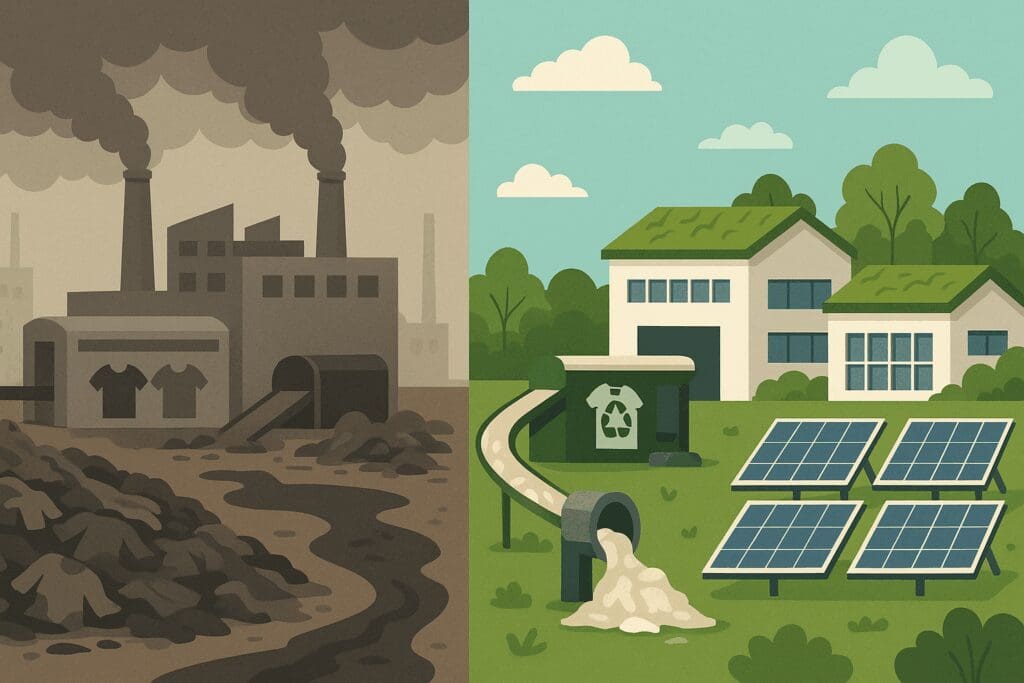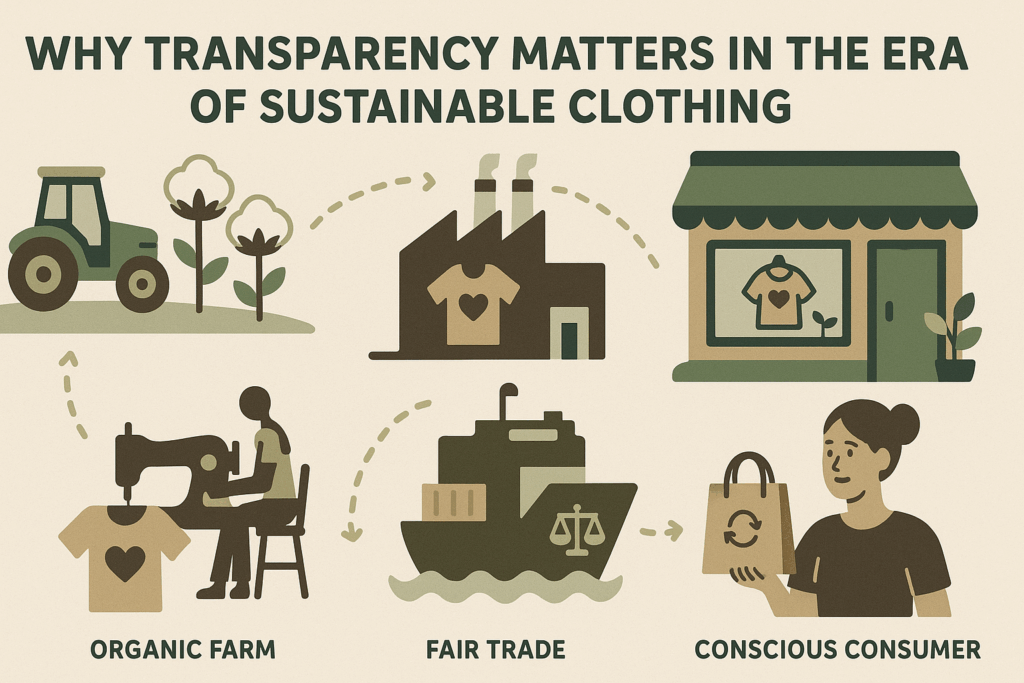In today’s rapidly changing fashion landscape, a powerful transformation is underway. As environmental concerns mount and social justice movements gain momentum, the spotlight is turning toward ethical consumption. At the heart of this shift lies the growing demand for fair trade apparel, a movement that fuses style, sustainability, and social responsibility. Fair trade apparel represents more than just a wardrobe choice—it is a conscious decision to support dignity in labor, reduce ecological harm, and promote a fashion industry that aligns with our values. This guide explores the essential dimensions of this transformation, from fiber sourcing to corporate transparency, providing a comprehensive overview of how the fashion world is evolving for the better.
You may also like: Effortlessly Elegant Style Ideas: The Ultimate Guide to Garden Wedding Dresses for Guests

Understanding the Foundations of Fair Trade Apparel
Fair trade apparel is rooted in a global ethical framework that ensures workers are paid fairly, labor rights are respected, and environmental sustainability is prioritized. Unlike fast fashion, which often exploits cheap labor and unsustainable materials, fair trade emphasizes human dignity, economic fairness, and ecological integrity. The concept was born out of broader fair trade movements in agriculture and has since expanded to include textiles, where exploitation is rampant.
At its core, fair trade apparel is certified by recognized bodies such as Fair Trade International, the World Fair Trade Organization (WFTO), and Fair Trade USA. These organizations enforce rigorous standards that include safe working conditions, reasonable working hours, child labor prohibitions, and environmentally conscious production practices. Moreover, fair trade certification provides traceability, ensuring that garments are made in supply chains where transparency, ethics, and sustainability intersect. For consumers, this means every purchase is an endorsement of a system that values people and the planet over profit.

Fair Trade Apparel and the Ethics of Material Sourcing
One of the most impactful decisions in sustainable fashion is the choice of raw materials. Fair trade apparel typically incorporates eco-friendly, renewable fibers such as organic cotton, hemp, bamboo, and recycled fabrics. Among these, organic cotton stands out as a cornerstone of ethical fashion. Unlike conventionally grown cotton, which is often heavily reliant on pesticides and synthetic fertilizers, organic cotton is cultivated without harmful chemicals, promoting biodiversity and soil health.
The term “100 organic cotton clothing” has become synonymous with ethical fashion choices. This label assures consumers that their garments are not only kind to the environment but also to the people who produce them. Smallholder farmers, particularly in the Global South, benefit from organic practices that safeguard their health and provide better market prices through fair trade networks. By choosing organic cotton garments, consumers help reduce water consumption, limit pesticide exposure, and empower farming communities.
In addition to cotton, the rise of natural fiber clothing brands further expands the repertoire of sustainable options. Brands are increasingly turning to fibers like TENCEL™, made from sustainably harvested wood pulp, and linen, which requires minimal water and pesticides. These innovations support a closed-loop system that reduces waste and pollution. Moreover, the demand for non toxic clothing is pushing brands to eliminate hazardous dyes and finishes, making apparel safer for wearers and workers alike.

The Business of Ethics: Why Brands Are Embracing Fair Trade Standards
The fashion industry has long been criticized for its opaque supply chains and exploitative labor practices. However, in response to increasing consumer awareness, more companies are adopting fair trade and sustainable standards. Ethical clothing brands are now embedding transparency, accountability, and social equity into their business models.
A growing number of sustainable apparel brands are making fair trade a non-negotiable part of their identity. This shift is not merely a marketing strategy but a business imperative, driven by a generation of consumers who demand authenticity and integrity. For instance, the best sustainable clothing brands often publish detailed sustainability reports, outlining their sourcing methods, labor practices, and carbon footprints. This openness fosters trust and encourages a culture of continuous improvement.
Some of the most sustainable clothing companies are now setting industry benchmarks. They not only pay living wages but also invest in community development, provide education and healthcare benefits to workers, and support women’s empowerment. Ethical fashion brands are proving that profitability and purpose can coexist, challenging the outdated notion that sustainability is a luxury. As ethical fashion becomes mainstream, these trailblazers are helping to redefine what success looks like in the apparel industry.

Exploring the Impact of Fair Trade Apparel on the Environment
Fair trade apparel doesn’t only change lives—it transforms landscapes. The environmental footprint of fashion is massive, with textile production contributing significantly to global carbon emissions, water waste, and chemical pollution. By prioritizing sustainable materials and ethical practices, fair trade apparel addresses many of these critical challenges.
Sustainable clothing brands are increasingly committed to reducing their ecological impact. Many adopt water-efficient dyeing processes, invest in renewable energy for manufacturing, and eliminate harmful substances from their supply chains. Organic clothing, for instance, uses significantly less water and energy than conventional options. Moreover, because it avoids synthetic chemicals, it reduces runoff that contaminates local water supplies. The shift to ecological fashion brands is helping to mitigate fashion’s contribution to environmental degradation.
Additionally, the push for environmentally friendly fashion brands is giving rise to innovations in textile recycling and circular design. Brands are embracing cradle-to-cradle principles, creating garments that can be reused, composted, or fully recycled at the end of their life cycle. This model reduces landfill waste and promotes resource efficiency, aligning with the principles of a circular economy. The adoption of such methods marks a vital step toward an industry that respects planetary boundaries.
Why Fair Trade Apparel Is More Than Just a Trend
While sustainability buzzwords are abundant in modern marketing, fair trade apparel represents a deeper cultural and economic shift. It reflects a growing movement toward conscious consumerism—one where individuals understand the power of their purchases. This awareness transcends trends and taps into fundamental human values: justice, respect, and stewardship.
Consumers are increasingly choosing to align their fashion choices with their values, driving demand for ethical fashion brands. Unlike the disposability associated with fast fashion, fair trade apparel is often crafted to last, both in quality and in design. Slow fashion brands prioritize craftsmanship, timeless aesthetics, and durability, helping reduce overconsumption. This philosophy challenges the current paradigm of excess and waste, promoting a more mindful approach to style.
The appeal of fair trade is also its ability to foster connection. Each garment tells a story—of the hands that made it, the land it came from, and the principles it upholds. Through this connection, consumers become part of a global community that values equity and ecological balance. This relational aspect of fair trade apparel ensures its relevance long after fleeting trends have passed.
Navigating the Market: Where to Buy Sustainable Clothing
With the surge in demand for ethical options, the question arises: where to buy sustainable clothing that genuinely aligns with these values? Fortunately, consumers now have more access than ever to ethical brands that prioritize sustainability without compromising style or quality.
The rise of online platforms and boutique stores dedicated to sustainable fashion has made it easier to discover reputable sources. From everyday essentials to luxury garments, there is a wide range of options available for every budget and aesthetic. Ethical clothing brands often feature certifications, material breakdowns, and transparent sourcing information on their websites, making it easier for shoppers to make informed choices.
For those seeking affordable options, cheap ethical clothing is becoming more accessible. While traditionally associated with higher prices, sustainable fashion is evolving to include budget-friendly alternatives through thrift shopping, rental services, and direct-to-consumer models. By focusing on quality and longevity, even lower-cost options can contribute to a more ethical wardrobe over time.
Retailers and marketplaces specializing in fair trade apparel are also expanding their reach. Many now offer curated collections of organic clothing for women, men, and children, ensuring inclusivity across demographics. Whether shopping for 100 percent cotton clothing brands or natural fiber staples, consumers can now explore fashion that aligns with their ethical and environmental values.

Spotlight on Ethical Innovation: Brands Leading the Movement
A new generation of brands is proving that fashion can be both stylish and sustainable. These innovators are at the forefront of the ethical fashion revolution, pushing boundaries and setting new standards for accountability. Among them, some of the most influential names in the industry have emerged as champions of fair trade apparel.
These ethical fashion brands often go beyond compliance to actively contribute to systemic change. They collaborate with artisan cooperatives, invest in regenerative agriculture, and implement zero-waste production methods. Many also operate under cooperative ownership models or provide profit-sharing opportunities for workers, further deepening their commitment to social equity.
Organic clothing brands such as People Tree, Pact, and Thought are well-regarded for their transparency and commitment to sustainability. These companies not only use organic cotton garments but also prioritize ethical supply chains and minimal environmental impact. Eco fashion brands like Reformation, Patagonia, and Eileen Fisher incorporate recycled materials, carbon offsets, and traceable production, exemplifying the fusion of style and sustainability.
For consumers seeking everyday essentials, natural cotton clothing and environmentally friendly fashion brands offer reliable options without compromising comfort or ethics. From versatile basics to bold statement pieces, these collections prove that sustainability can coexist with creativity and innovation.

Why Transparency Matters in the Era of Sustainable Clothing
One of the defining characteristics of ethical fashion is transparency. In a world where greenwashing is rampant, transparency serves as a benchmark for accountability. It allows consumers to verify claims and ensures brands are held responsible for their impact.
Fair trade apparel thrives on openness. Companies that value transparency often provide detailed information about their factories, materials, labor policies, and environmental metrics. This openness enables consumers to trace their garments from farm to hanger, fostering trust and engagement. For brands, it creates a competitive advantage by showcasing integrity and commitment to continuous improvement.
Transparency also empowers consumers to make better choices. When armed with accurate information, shoppers can support brands that align with their values and avoid those that rely on exploitation or environmental degradation. This informed decision-making plays a crucial role in shifting the market toward ethical standards.
Moreover, transparency encourages systemic change. As more consumers demand accountability, industry-wide standards are being developed to measure and report social and environmental performance. From blockchain technology to third-party certifications, innovations in transparency are transforming the way we understand and engage with fashion.
Exploring the Role of Consumers in Advancing Ethical Fashion
The success of fair trade apparel hinges not only on brands but also on consumers. Every purchase represents a choice, a vote for the kind of world we want to live in. By choosing sustainable clothing, consumers become active participants in a global movement for justice and sustainability.
Conscious consumers play a critical role in shaping demand. As interest in sustainable dress brands and slow fashion grows, the industry is responding with increased investment in ethical practices. This consumer-driven change is especially powerful in an age of social media, where advocacy and accountability intersect.
Beyond purchasing, consumers can also support ethical fashion by educating others, demanding better practices from brands, and participating in grassroots campaigns. Supporting local artisans, choosing secondhand, and extending the life of garments through repair and recycling are additional ways to promote sustainability. Each action, however small, contributes to a larger cultural shift.
The movement toward sustainable fashion also emphasizes inclusivity. By challenging elitist narratives and promoting affordable ethical options, consumers can help ensure that sustainability is accessible to all. This democratization of ethical fashion is essential for creating a just and resilient industry that reflects the diversity of its global stakeholders.
Looking Ahead: The Future of Fair Trade and Sustainable Apparel
As we look to the future, the convergence of innovation, ethics, and environmental stewardship promises to reshape the fashion industry. Fair trade apparel is not just a passing trend but a foundational element of this new paradigm. The growing alignment between consumer values and brand practices signals a shift toward deeper responsibility and long-term thinking.
Emerging technologies are enhancing the capabilities of sustainable clothing brands. From regenerative farming techniques to AI-powered supply chain management, innovation is enabling greater efficiency, traceability, and impact. These advancements make it possible to scale ethical practices while maintaining high standards.
At the same time, policy changes and global agreements are influencing the regulatory landscape. Governments are beginning to mandate sustainability disclosures, ban harmful substances, and incentivize ethical practices. These shifts provide a framework for aligning private sector action with public interest.
The future of fashion lies in collaboration. By working across sectors, sharing best practices, and supporting one another, brands, consumers, and policymakers can collectively drive systemic transformation. Fair trade apparel offers a roadmap for this journey—one that honors both people and the planet.
Frequently Asked Questions: Exploring the Deeper Layers of Fair Trade Apparel and Sustainable Fashion
How can consumers verify whether a brand truly adheres to sustainable and ethical practices?
One of the most practical strategies for consumers is to examine third-party certifications such as GOTS (Global Organic Textile Standard), OEKO-TEX®, and Fair Trade International. These certifications require rigorous auditing processes and transparent documentation of production practices. In addition, reviewing annual sustainability reports can provide insight into a company’s environmental and labor policies. Ethical clothing brands that prioritize transparency will often disclose factory information, labor standards, and their commitment to using organic cotton garments or recycled fibers. Furthermore, consumers can investigate whether a brand aligns with independent sustainability rating platforms that evaluate performance across environmental, labor, and animal welfare metrics.
What distinguishes fair trade apparel from other sustainable clothing options?
While both aim to reduce harm and promote responsibility, fair trade apparel places a stronger emphasis on the social dimensions of fashion production, particularly worker rights and fair compensation. Sustainable clothing, on the other hand, often focuses more broadly on reducing environmental impact through practices like using recycled materials or minimizing water use. However, these two areas overlap considerably. For example, many eco friendly clothing brands now also meet fair trade standards, blending ecological responsibility with social justice. The distinction lies in the primary focus—fair trade centers on ethical treatment of labor, while sustainable apparel emphasizes environmental preservation, though the most sustainable clothing companies often do both.
Where to Buy Sustainable Clothing That Balances Quality and Accessibility?
Finding sustainable fashion that doesn’t compromise affordability or style has become easier thanks to the rise of digital platforms and boutique ethical brands. Many online marketplaces now curate selections from slow fashion brands and eco fashion brands, offering consumers a centralized space to explore vetted options. Consumers interested in cheap ethical clothing can turn to resale platforms, clothing rental subscriptions, or minimalist capsule collections made from organic cotton clothing. Larger retailers are also expanding their sustainable apparel lines, making it easier to shop sustainably in mainstream outlets. The key is to look for transparency, durability, and certifications when deciding where to buy sustainable clothing that aligns with personal ethics and budgets.
What role do materials like organic cotton and natural fibers play in ethical fashion?
Materials are the foundation of sustainable fashion, with organic cotton and other natural fibers representing some of the most impactful choices. Organic cotton garments are cultivated without synthetic pesticides or fertilizers, significantly reducing environmental degradation and improving soil health. Natural fiber clothing brands often use materials such as hemp, linen, and bamboo, which have a lower carbon footprint and require fewer resources than synthetic alternatives. In addition, these fabrics tend to be biodegradable and more breathable, enhancing wearer comfort while minimizing long-term waste. Choosing 100 organic cotton clothing over conventional textiles not only benefits the environment but also safeguards the health of agricultural workers and end consumers.
How are innovations in textile technology influencing sustainable clothing brands?
Sustainable clothing brands are increasingly investing in textile innovation to push the boundaries of eco-conscious design. For instance, some brands are incorporating bio-fabricated materials like mushroom leather and algae-based fibers, which offer biodegradable alternatives to traditional textiles. Closed-loop production systems are being implemented to reclaim waste during the manufacturing process and transform it into new garments, reducing the reliance on virgin resources. Blockchain technology is also being used to improve supply chain transparency, allowing customers to trace each step from raw material to finished product. These developments are helping ethical fashion brands scale their operations while maintaining environmental and social accountability.
Why Fair Trade Apparel Is Crucial in Addressing Global Labor Inequality
Fair trade apparel addresses a systemic issue in global fashion: the exploitation of labor in low-income countries. Many workers, particularly women, are subjected to dangerous conditions, insufficient wages, and little to no job security. By contrast, fair trade standards ensure living wages, gender equity, safe working conditions, and opportunities for community investment. Ethical clothing brands that commit to fair trade principles contribute to a more just global economy by prioritizing worker dignity over cost-cutting. This creates a ripple effect that uplifts entire communities, making fair trade apparel a critical lever for combating poverty and promoting human rights in the fashion sector.
How do ethical brands ensure that their clothing remains non toxic and safe to wear?
Ethical brands are increasingly focused on eliminating harmful chemicals from every stage of clothing production—from the field to the factory to the finished product. Non toxic clothing often undergoes rigorous testing for residues of heavy metals, formaldehyde, and azo dyes, which are common in fast fashion. Certifications such as OEKO-TEX® Standard 100 guarantee that garments are free from substances known to be harmful to human health. Additionally, organic clothing brands avoid toxic finishes, flame retardants, and wrinkle-resistant treatments that often contain carcinogenic compounds. This commitment not only protects consumers but also reduces water and air pollution in communities where clothing is manufactured.
How can consumers support ethical clothing brands beyond making purchases?
While purchasing from ethical brands is one impactful way to support sustainable fashion, consumers can also become advocates through education and community engagement. Sharing information about environmental fashion brands and slow fashion principles on social media raises awareness and normalizes responsible consumer behavior. Participating in clothing swaps, supporting local makers, and repairing rather than discarding garments extend the life cycle of apparel and reduce consumption. Consumers can also use their voices to demand accountability from larger companies, urging them to adopt more sustainable practices. By becoming informed and vocal participants in the fashion ecosystem, individuals contribute meaningfully to systemic change.
What are the psychological benefits of transitioning to a sustainable wardrobe?
Beyond environmental and ethical advantages, adopting a sustainable wardrobe can have profound psychological benefits. Many individuals experience a sense of purpose and empowerment when they align their values with their shopping habits. Owning fewer, higher-quality pieces from sustainable dress brands often encourages intentionality and reduces decision fatigue, which is common in cluttered wardrobes. Moreover, choosing environmentally friendly fashion brands can foster deeper emotional connections to clothing, enhancing appreciation and prolonging garment use. This shift from impulsive buying to conscious consumption supports mental clarity, emotional resilience, and a stronger sense of identity rooted in meaningful choices.
The Long-Term Impact of Choosing Fair Trade Apparel on Future Generations
Investing in fair trade apparel today has long-lasting implications for the health of our planet and its people. Supporting ethical clothing brands that prioritize both social equity and ecological stewardship helps reduce greenhouse gas emissions, protect biodiversity, and promote economic justice. As more consumers demand transparency and accountability, the fashion industry is compelled to innovate and elevate its standards. This transformation benefits not only current garment workers but also future generations who will inherit the environmental legacy of our choices. By shifting toward sustainable clothing and ethical fashion brands, we lay the groundwork for a global economy that values sustainability as a norm, not an exception.
Reflecting on the Powerful Shift Toward Fair Trade Apparel and Sustainable Fashion
In a world facing unprecedented environmental and social challenges, the rise of fair trade apparel represents a beacon of hope and a call to action. It offers a powerful shift away from the exploitative and unsustainable practices that have long defined the fashion industry, toward a model rooted in dignity, equity, and ecological balance.
By choosing fair trade apparel, consumers support ethical brands that prioritize people over profit, reduce environmental impact, and foster community well-being. From 100 organic cotton clothing and natural fiber garments to affordable options from the best sustainable clothing brands, there is now a wealth of choices for those seeking to align their style with their values.
This guide has highlighted the many facets of ethical fashion, from material sourcing and brand transparency to consumer advocacy and future innovations. It has underscored the importance of sustainable clothing not only as a wardrobe decision but as a statement of solidarity with the planet and its people.
As the fashion industry continues to evolve, the principles of fair trade and sustainability must remain at the center of its transformation. They are not simply trends but essential pillars of a more just, beautiful, and resilient world. Through collective action and conscious choices, we can continue to propel this powerful shift toward a fashion future that truly reflects our highest ideals.
Further Reading:
Better Brand Edit: Vegan Handbags for the Cruelty-Free Fashionista
62 Clothing Brands from the USA Making More Ethical and Sustainable Fashion



